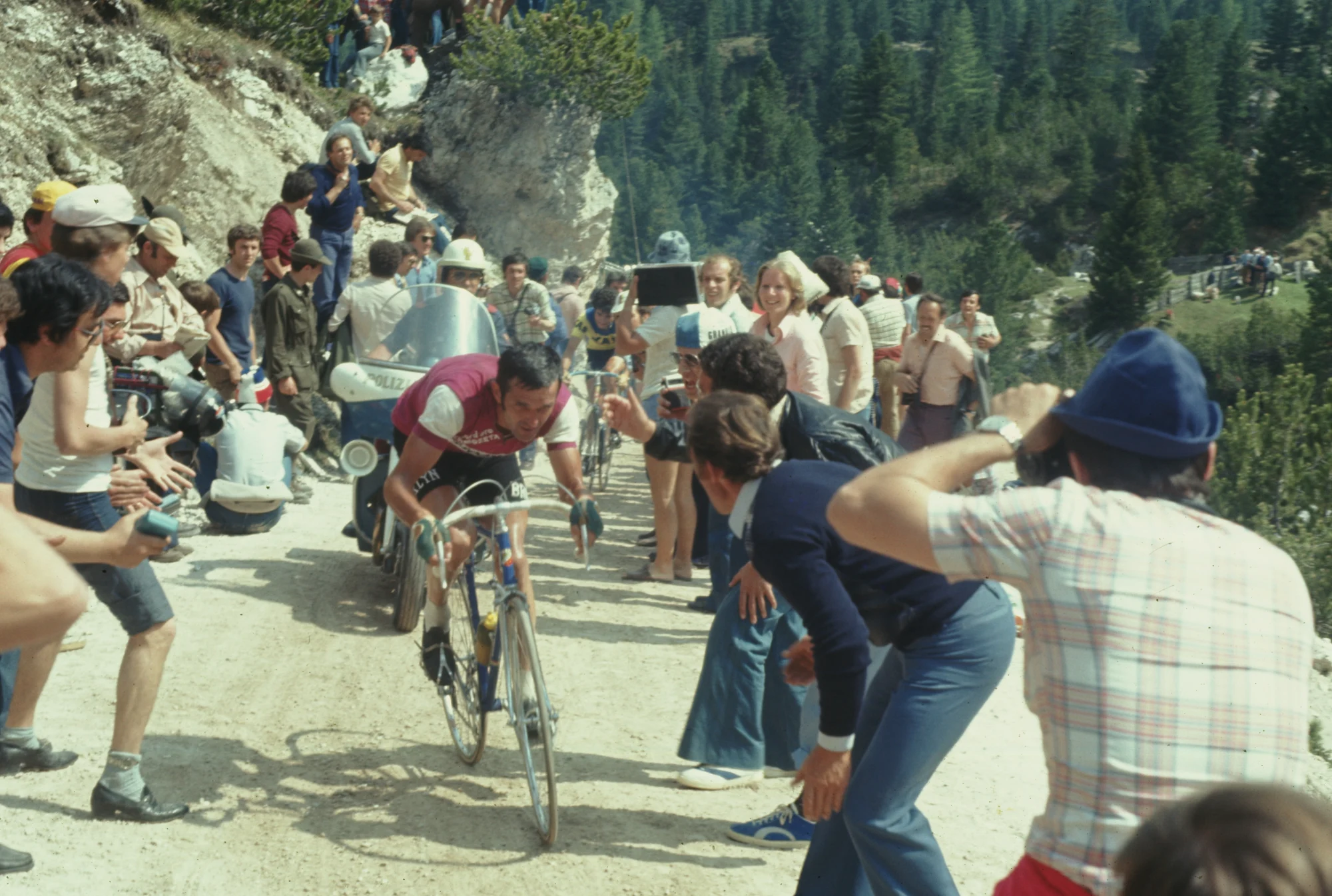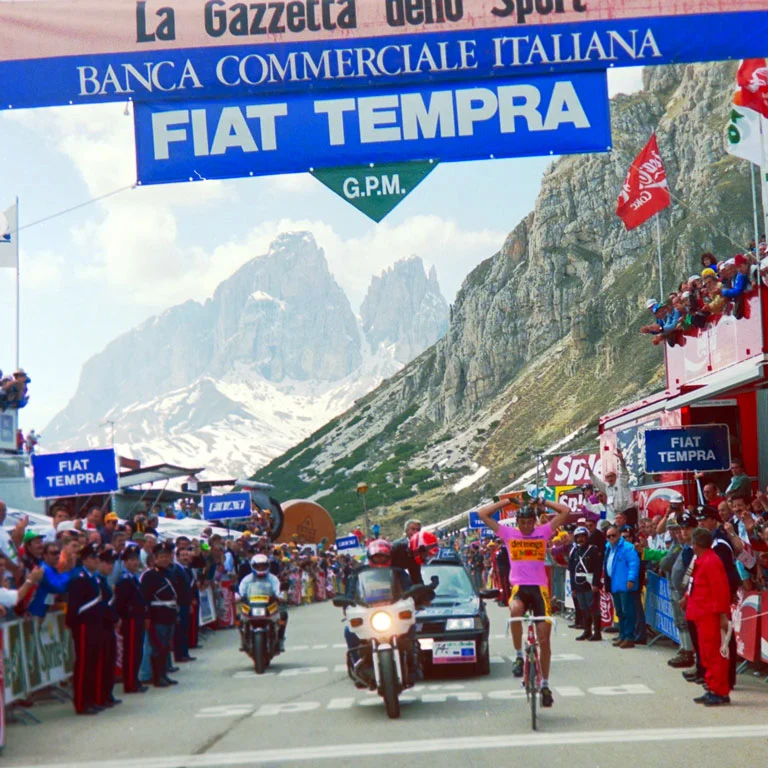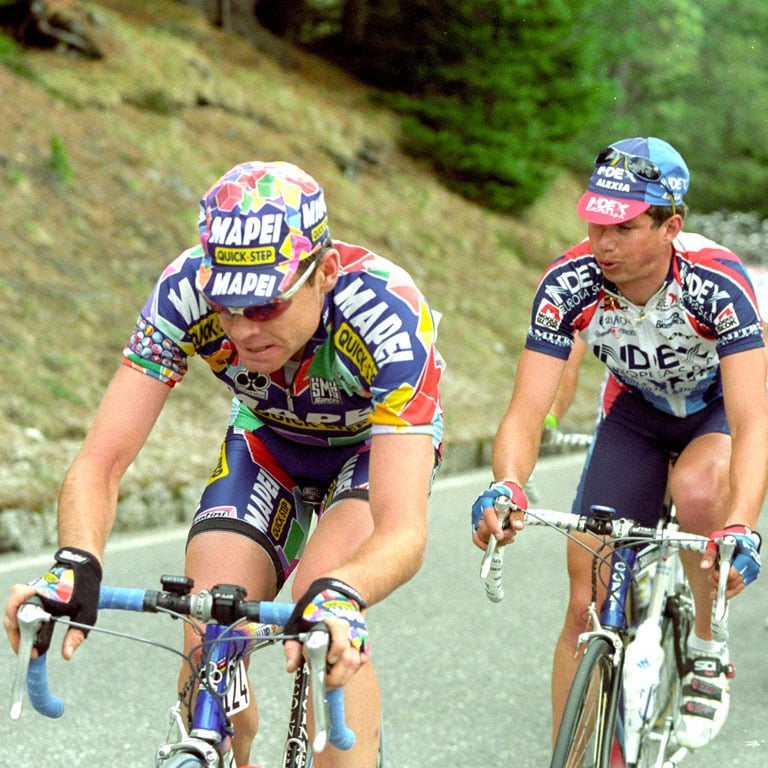
GIRO D'ITALIA HISTORY - THE QUEEN STAGE
Stage Sixteen of this year’s Giro d’Italia crosses over mountains in the Dolomites that I know and love well. The climbs have also played illustrious and consequential roles in past editions of the Giro. The “Tappone,” or Queen Stage, of this year’s race will climb 5700 meters over four Category One passes in just 212 kilometers. Starting in Sacile at just 30 meters above sea level, the riders will begin by crossing La Crosetta, a 6.6% grade for 15 kilometers which summits at 1118 meters just 25k into their epic day.
After descending into Belluno (395 m), 50 kilometers of false flats brings them to the base of Passo Fedaia, which will climb to 2057 m. Its summit lies beneath the tallest peak in the Dolomites, Mount Marmolada (3343 m). This beast can crush your soul, with seemingly interminable straight stretches and frequent head winds, but that is before the final switchbacks to the summit. The beautiful little village of Sottoguda (1250 m) features an INCREDIBLE “Natural Park” through the Serrai (tiny canyon) potentially taking riders off the climb for two kilometers past waterfalls and over wooden bridges. There was storm damage in 2018 and it remains unclear if the race will pass through the Serrai. The gradient varies over the opening 14 kilometers but at Malga Ciapela, where the Serrai rejoins the main road, it gets STEEP and will average 11% for the final 5.5 kilometers, nearly three of which are at 15%. From Mas (378 m) the riders will have been climbing for 58 kilometers with 1679 meters of vertical to reach its summit. Two climbs yet remain!
After descending into Belluno (395 m), 50 kilometers of false flats brings them to the base of Passo Fedaia, which will climb to 2057 m. Its summit lies beneath the tallest peak in the Dolomites, Mount Marmolada (3343 m). This beast can crush your soul, with seemingly interminable straight stretches and frequent head winds, but that is before the final switchbacks to the summit. The beautiful little village of Sottoguda (1250 m) features an INCREDIBLE “Natural Park” through the Serrai (tiny canyon) potentially taking riders off the climb for two kilometers past waterfalls and over wooden bridges. There was storm damage in 2018 and it remains unclear if the race will pass through the Serrai. The gradient varies over the opening 14 kilometers but at Malga Ciapela, where the Serrai rejoins the main road, it gets STEEP and will average 11% for the final 5.5 kilometers, nearly three of which are at 15%. From Mas (378 m) the riders will have been climbing for 58 kilometers with 1679 meters of vertical to reach its summit. Two climbs yet remain!

The descent into Canazei (1442 m) leads right into the Passo Pordoi (2239 m), the highest point on the 2021 Giro (Cima Coppi). It averages 6.7% over its 11.9 kilometers with 28 switchbacks numbered (cruelly?) with stone blocks and, despite its height, is theoretically the easiest climb of the day. It is a steady descent into Arabba (1601 m) and then undulating over the next 25 km to the Passo Giau. The Giau (2233 m) is steep and unrelenting, averaging 9.1% for 10 kilometers. The riders who are tired or struggling could really lose time here. In 2011, it was my final climb back to Cortina, after a three day, ten-pass route through the Dolomites, also preceded by the Fedaia. We climbed about 8000 meters (over three days) and I just crawled up it, seemingly for an eternity! The descent into Cortina d’Ampezzo (1225 m) is fast and spectacular, plateauing only in the town of Pocol (1535 m). The beautiful and very chic ski village of Cortina hosted the 1956 Winter Olympics and will host again in 2026. Spaniard Joaquin Rodriguez won the 2012 stage here in the town center, which also came down from the Giau. Let’s now consider past editions where these peaks played defining roles.



The Giau was the 1973 Cima Coppi on the penultimate day in an edition dominated by Belgian Eddy Merckx. Spanish legend Jose Manuel Fuente (Giro KOM in the previous two editions) put on a climbing exhibition, winning the stage solo after 130 km in the lead. He summited the Giau with a 2:25 gap, which he increased on the Tre Croci out of Cortina, collecting enough points to secure his third (of four) consecutive Green KOM jerseys and deny GC and points winner Merckx a clean sweep.


The Fedaia-Pordoi combo was the finale of a four-pass Dolomite monster, again on the penultimate day in 1975. Belgian Roger DeVlaeminck, the points leader, triumphed at the summit, remarkably his seventh stage victory of the race! His breakaway companion Spaniard Francisco Galdos closed to within just 41 seconds of Italian Fausto Bertoglio’s overall lead with only the Stelvio remaining, where Bertoglio rallied to win overall.

After years of uninspired routes emphasizing sprint bonuses and time trials, the 1989 Giro was an old school classic with a stacked field, difficult weather, and challenging stages. Stage 14 was the daunting five pass Tappone through rain, snow, and fog that included the Giau, Fedaia, AND Pordoi, much like this year, but finishing in Corvara. Race leader Erik Breukink of Holland bonked on the Pordoi while Frenchman Laurent Fignon attacked. Italian Flavio Giupponi went with him and claimed the stage, but Fignon pulled on the Maglia Rosa and would wear it all the way to the finish in Firenze.




The 1991 route, thought by many to be harder than the Tour de France, again saw these climbs as its centerpiece. The Queen Stage 17 featured SIX passes with a Pordoi, Fedaia, and Pordoi again as the finale. Italian Franco Chioccioli, in pink since stage five and dubbed “Coppino” by the tifosi, emulated his Campionissimo namesake Fausto Coppi by escaping masterfully on the second ascent of the Pordoi, fittingly the Cima Coppi. His stage victory, the second of three, cemented his eventual overall victory.



The Fedaia featured prominently twice in more recent editions, both Queen Stages. Stage 17 in 1998 crossed four brutal passes in the final 100 kilometers with all the contenders together starting the Fedaia, the penultimate climb. Russian Pavel Tonkov, the 1996 Giro winner, attacked and diminutive Italians Marco Pantani, a fan favorite, and Giuseppe Guerini responded, upped the ante, and then dropped Tonkov. Some of Pantani’s legend was formed that day as he drove the break, mopping up earlier attackers to take Pink (he already had Green) at the finish on the Passo Sella, 1998’s Cima Coppi. He kept both jerseys to the finish in Milan and then won the Tour de France the following month. In 2002, Mexican climbing sensation Julio Perez-Cuapio, not a GC threat, broke clear on the Fedaia and stayed clear over the Pordoi, triumphing alone in Corvara and taking the green KOM jersey for keeps. Italian Pietro Caucchioli meanwhile launched his GC bid on the Pordoi but was passed by Paolo “Il Falco” Savodelli, who flew down the descent, nearly catching Cuapio, and laying the groundwork to eventually win the Giro. Who should take Pink that day but a baby-faced mountain biker and future World and Tour de France Champion, Australian Cadel Evans, in just his second season on the road with Mighty Mapei.







FOOTNOTES
Dave Campbell raced for 35 years and still rides regularly. He lives in the US, where he teaches, announces cycling events, and writes cycling history on Instagram: @clips_and_straps
Dave Campbell raced for 35 years and still rides regularly. He lives in the US, where he teaches, announces cycling events, and writes cycling history on Instagram: @clips_and_straps






